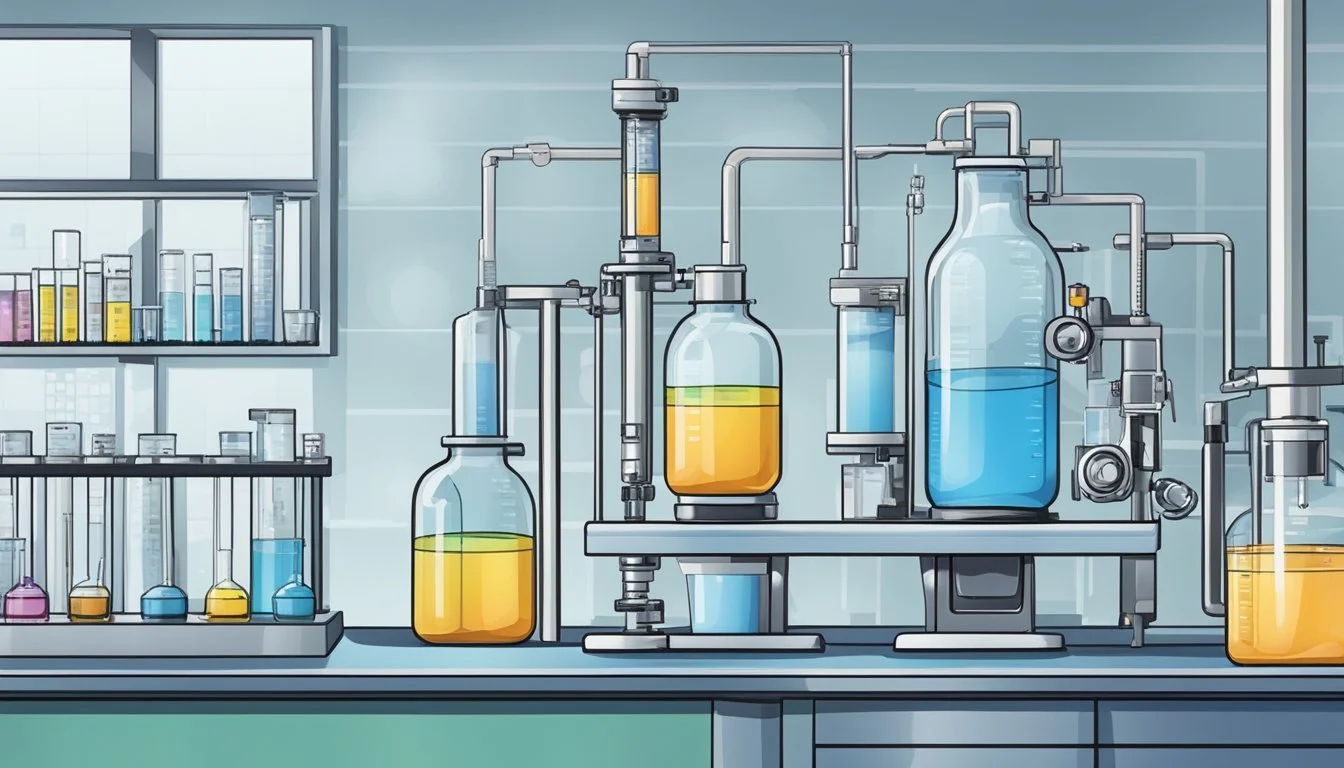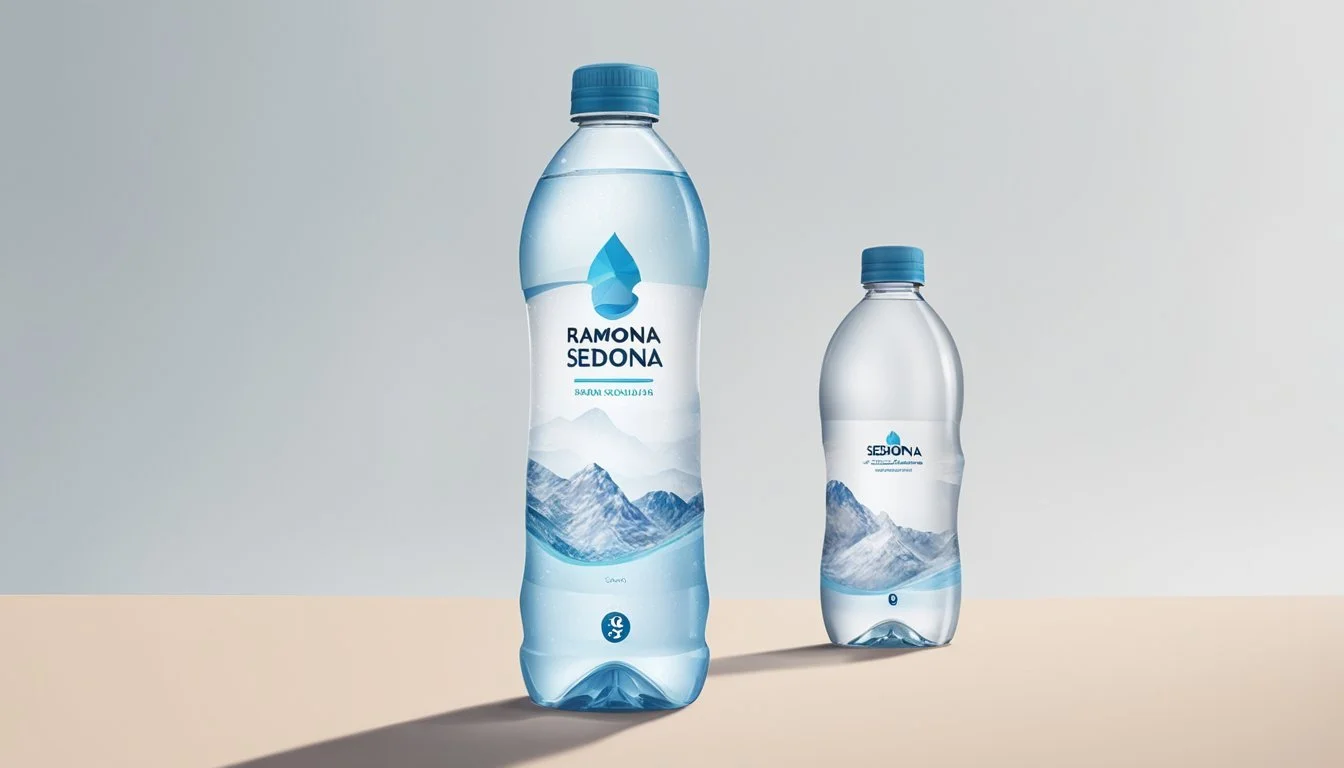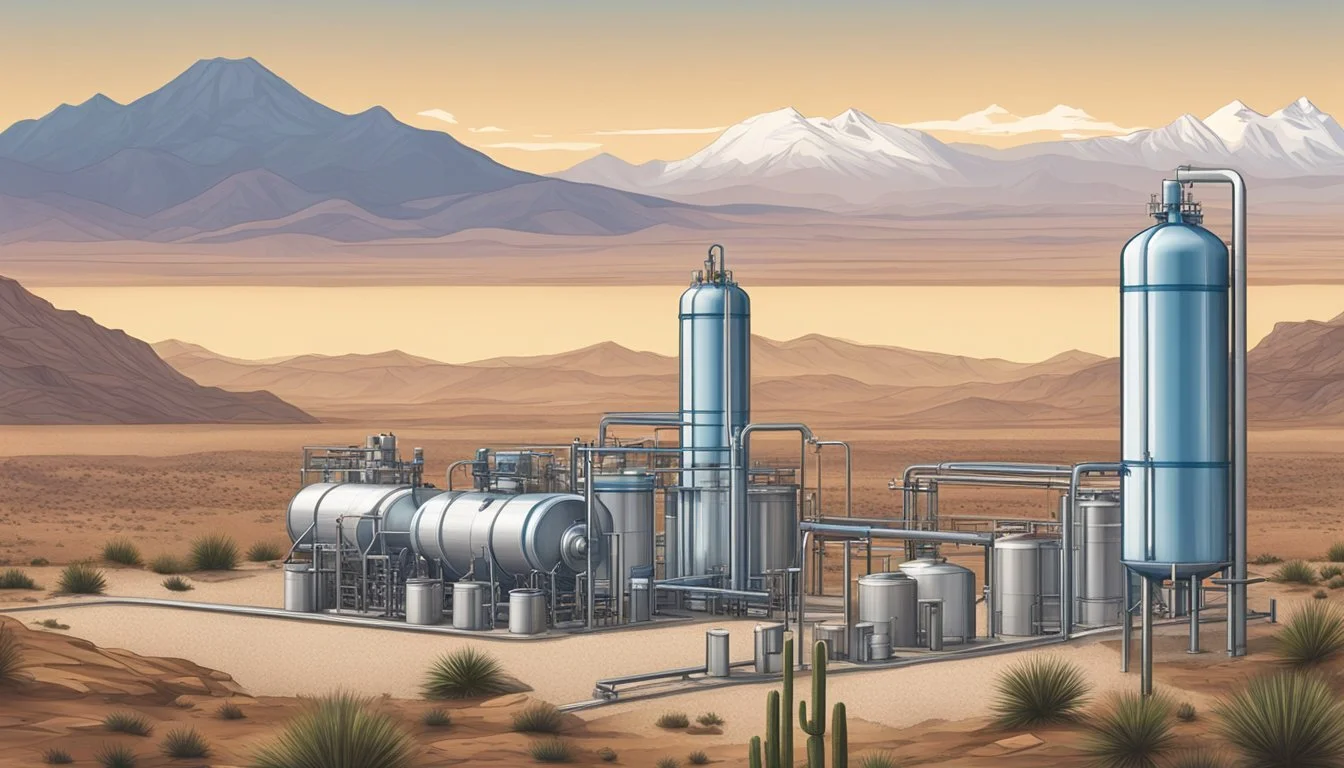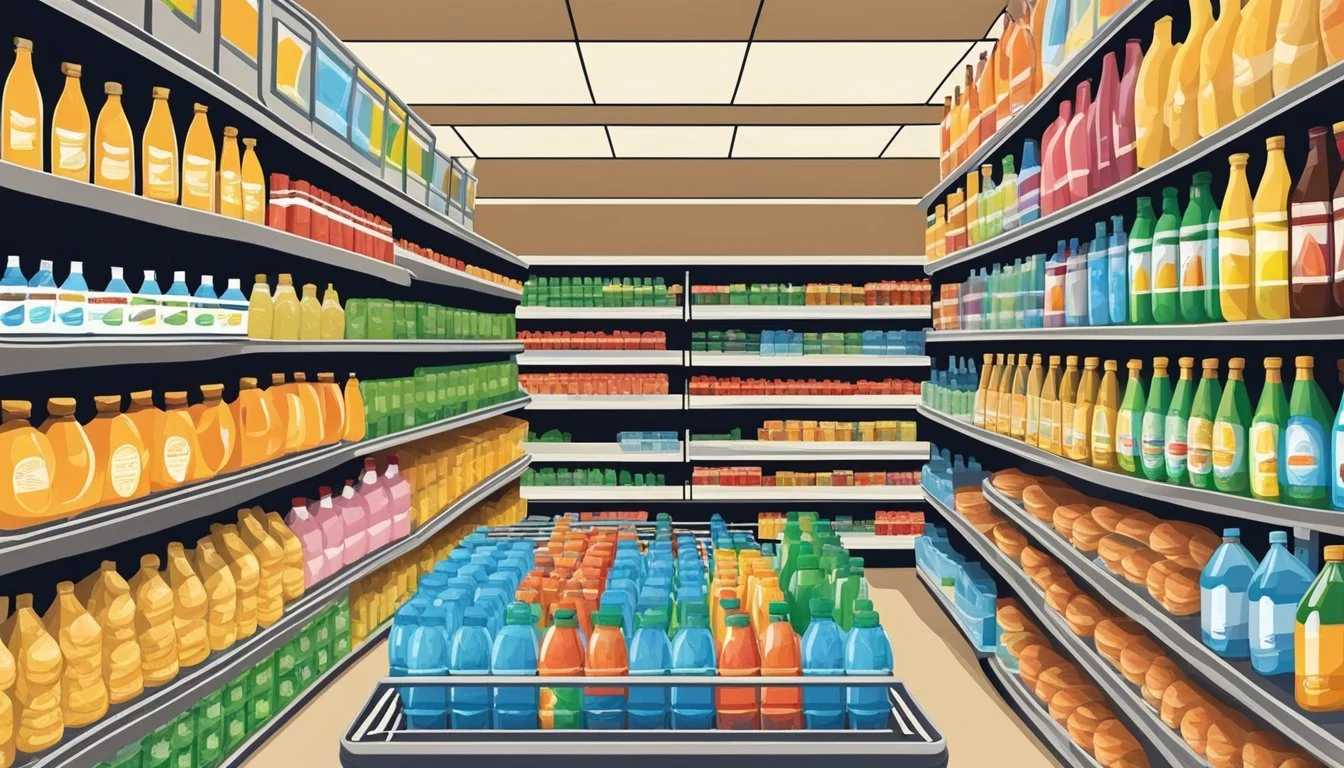Purely Sedona vs. Ramona
Which Bottled Water is Better?
Choosing the right bottled water can greatly affect your hydration experience. Two popular premium brands, Purely Sedona and Ramona, offer unique qualities that cater to various preferences. Ramona stands out with its extensive history and recognizable brand name, making it a trusted choice for many consumers.
Purely Sedona, on the other hand, prides itself on its artisanal approach and high-quality mineral content. Sourced from natural springs, it promises a crisp and refreshing taste that appeals to those seeking a gourmet hydration option.
By comparing Purely Sedona’s artisanal appeal with Ramona's long-standing reputation, readers can make an informed decision about which bottled water best suits their needs. Ultimately, the choice hinges on whether you prioritize a storied brand or a distinctive, high-mineral content product.
Understanding the Basics of Bottled Water
Bottled water comes in various types, each with its characteristics and sources. These differences are crucial for consumers looking to make informed choices.
Spring water is sourced from natural springs and contains minerals naturally present in the water. This type of water is often valued for its natural taste and health benefits.
Purified water undergoes processes like distillation, reverse osmosis, or carbon filtration to remove impurities. This ensures a high level of purity and makes it a popular choice for those concerned about contaminants.
Mineral water must contain a certain level of minerals such as calcium, magnesium, and potassium. It often comes from mineral springs and is touted for its health benefits due to these minerals.
Alkaline water has a higher pH level, typically above 7. It is believed to help neutralize acid in the body and improve hydration. This type can also contain added electrolytes, enhancing its benefits.
PH level indicates the acidity or alkalinity of the water. A neutral pH is 7, with anything below being acidic and above being alkaline. The pH level can impact taste and potential health benefits.
Many turn to bottled water as an alternative to tap water, seeking consistency in taste and purity. While tap water is regulated, its quality can vary depending on location and local infrastructure.
When choosing bottled water, considerations such as source, treatment, and mineral content are essential. These factors determine the taste, health benefits, and overall drinking experience.
Analyzing Water Quality and Purity
Assessing the quality and purity of bottled water involves examining various aspects such as filtration processes, the impact of the water source, and the presence of contaminants.
Filtration and Natural Filtration Processes
Purely Sedona and Ramona use different filtration methods to ensure purity. Purely Sedona is sourced from the artesian springs of Sedona, Arizona, and utilizes a natural filtration process. This involves water percolating through rocks over hundreds of years, which removes impurities naturally.
Ramona often employs reverse osmosis in its filtration. This method forces water through a semi-permeable membrane, effectively eliminating many contaminants. Both natural and mechanical filtration methods aim to provide clean, safe water, but they do so through markedly different processes.
Impact of Source on Quality
Purely Sedona’s source in Oak Creek Canyon, formed by centuries of rainfall and snowmelt, contributes to its distinguished taste and purity. The natural spring water from this region is highly prized for its cleanliness and unique mineral content, which enhances its flavor.
In contrast, Ramona sources its water from various aquifers, which can result in slight variations in mineral composition and taste. The quality of the water is closely linked to the geological characteristics of the aquifer, and Ramona ensures consistency through rigorous quality control measures.
Common Contaminants and Safety Measures
Safety is a top priority for both brands, with measures in place to guard against common contaminants such as bacteria, heavy metals, and chemical residues. Purely Sedona prides itself on its naturally filtered water, reducing risks associated with chemical contaminants due to minimal human intervention in the filtration process.
Ramona, using reverse osmosis, eliminates a broad spectrum of impurities, including harmful contaminants that may be present in aquifers. Both brands conduct regular testing to ensure compliance with safety standards, guaranteeing that the bottled water consumers receive is safe and pure for daily consumption.
Health Implications of Bottled Water Consumption
Considering bottled water's health implications reveals the importance of its mineral content and its role in maintaining hydration and pH balance for overall wellness. Purely Sedona and Ramona differ in these aspects, with each brand offering unique health benefits.
Mineral Content and Health Benefits
Minerals in bottled water, such as calcium, magnesium, and potassium, greatly benefit health. Calcium aids in bone health and dental strength, mitigating issues like osteoporosis. Magnesium supports muscle function, including relaxation and contraction, and helps in biochemical reactions in the body.
Potassium is crucial for heart health and aids in digestion by promoting proper muscle contractions. Different brands have varying mineral compositions, which can influence consumer choice based on individual nutrient needs. Users should check mineral levels on labels to choose the water that best meets their health requirements.
Hydration and pH Balance for Wellness
The pH balance of bottled water can influence hydration and body function. Alkaline water has a higher pH level, which some believe helps to neutralize acid in the body. Although the body naturally maintains pH balance, alkaline water is marketed for additional benefits.
Proper hydration is essential for overall health, with bottled water providing a convenient option. The effectiveness of hydration depends on the water quality and pH level. Ensuring the water is free from contaminants, such as nanoplastics, also plays a vital role in health.
Product Profiles: Purely Sedona and Ramona
This section delves into the origins and sources, as well as the taste and texture of Purely Sedona and Ramona bottled water brands.
Origin and Source Exploration
Purely Sedona is sourced from natural springs in Sedona, Arizona, which is known for its pristine and naturally filtered water. This local sourcing supports regional businesses and offers a unique mineral composition due to the geological characteristics of the area.
Ramona, on the other hand, is sourced from multiple wells across different regions, ensuring a consistent supply. While not tied to a specific locale like Purely Sedona, it often boasts reliable quality and accessibility.
Both brands emphasize their commitment to quality and sustainability, though their source locations and branding strategies differ significantly.
Water Taste and Texture Analysis
Purely Sedona offers a crisp, refreshing taste that many consumers find appealing. It has an alkaline pH, which is often preferred for its perceived health benefits. While maintaining a pure flavor, it also supports a velvety texture, enhancing the drinking experience.
Ramona is known for its smooth taste, making it a popular choice among those who prefer a milder water profile. The texture is clean and easy to drink, often compared favorably to well-known brands like Aquafina and Pure Life.
Both water brands provide a pleasant drinking experience, but their distinct taste profiles cater to different consumer preferences.
Comparing Production and Packaging Processes
The production and packaging processes of Purely Sedona and Ramona bottled water differ significantly in their material use and environmental considerations.
Material Use and Environmental Considerations
Purely Sedona employs sustainable practices by focusing on the use of eco-friendly materials. They often utilize glass bottles, as glass is more recyclable and less harmful to the environment compared to plastic. Their emphasis on purity and local heritage aligns with their commitment to reducing plastic waste.
Ramona, while also emphasizing sustainability, primarily uses recycled plastic in their packaging. This approach helps to minimize environmental impact while maintaining cost-effectiveness. However, plastic, even when recycled, still has a greater environmental footprint compared to glass.
Comparison:
Purely Sedona: Glass bottles, eco-friendly, recyclable
Ramona: Recycled plastic bottles, lower cost, plastic waste reduction
These differences highlight the distinct approaches taken by each brand to address environmental impacts through their packaging choices.
Market Analysis: Brand Perceptions and Consumer Choices
Purely Sedona and Ramona are positioned uniquely in the bottled water market. Each brand's perception and pricing strategy play crucial roles in influencing consumer choices.
Comparative Brand Analysis
Purely Sedona emphasizes purity and local heritage, marketing its Arizona spring water as a premium choice. This brand stands out for its commitment to sourcing high-quality, local water, enhancing its reputation among eco-conscious consumers.
Ramona takes a different approach. The brand focuses on versatility and accessibility, offering a range of sizes and packaging options that cater to various consumer needs. Ramona’s branding highlights reliability and widespread availability, appealing to consumers seeking a balanced mix of quality and convenience.
Both brands maintain distinct consumer bases, driven by their unique value propositions and marketing efforts. Purely Sedona attracts an audience concerned with purity and local sourcing, while Ramona appeals to those prioritizing flexibility and broad market presence.
Pricing Strategy and Consumer Value
The pricing strategies of Purely Sedona and Ramona reflect their brand positioning and target demographics.
Purely Sedona adopts a premium pricing strategy, positioning itself as a high-end option in the bottled water market. This higher price point reinforces its premium image but may limit its appeal to cost-sensitive consumers. The brand justifies this price through its focus on purity and the local origin of its water.
Ramona, in contrast, offers a more competitive pricing structure. By providing bottled water at various price points and packaging options, Ramona ensures that it remains accessible to a broader audience. This strategy enhances its value perception among consumers who seek quality without a premium price tag.
Ultimately, both Purely Sedona and Ramona cater to different consumer segments, shaped by their distinct pricing and brand strategies.
The Role of Water Sommeliers in Premium Water Selection
Water sommeliers play a pivotal role in guiding consumers and enhancing the fine dining experience through their expertise in various water types. They help differentiate between brands like Purely Sedona and Ramona based on quality, flavor profiles, and source.
Cultivating a Discerning Drinking Experience
Water sommeliers are trained professionals who thoroughly understand the subtleties of different water types, such as mineral content, pH levels, and source authenticity. Their expertise helps consumers appreciate the nuances between premium bottled waters.
In fine dining, water sommeliers recommend specific waters to pair with different courses, much like a wine sommelier. This elevates the dining experience and accentuates the flavors of the meal.
Purely Sedona and Ramona are compared based on taste, mineral composition, and source. This expert insight aids customers in making informed choices tailored to personal preferences or dining requirements.
Water sommeliers' guidance ensures that the selected water not only complements the meal but also aligns with the diner’s expectations for quality and refinement.
Environmental Impact and Sustainability in the Bottled Water Industry
The bottled water industry faces scrutiny over its environmental impact, with emphasis on carbon emissions and plastic waste. Companies are implementing varied strategies to improve sustainability.
Sustainability Efforts by Brands
Brands like Purely Sedona and Ramona have stepped up their sustainability efforts. Purely Sedona focuses on eco-friendly packaging and minimal water waste during production. They use recycled materials for their bottles and invest in local water conservation projects.
Ramona emphasizes renewable energy in its production process and minimizes its water footprint. Their factories often feature solar panels and energy-efficient equipment, reducing their overall carbon emissions. Both brands are adoptive of water stewardship programs, ensuring responsible water usage that does not deplete local resources.
Reducing Carbon Footprint and Plastic Usage
Reducing carbon emissions and plastic usage is critical. Purely Sedona aims to lower their carbon footprint with efficient logistics and localized production to cut down on transportation emissions. They are exploring bio-based plastics and encouraging consumers to recycle.
Ramona focuses on lightweight bottle designs, reducing plastic per bottle. They are also investing in plastic alternatives and refill stations. Measures include improved recycling programs and partnerships with environmental organizations to clean up plastic waste.
Both brands are part of a wider industry trend toward sustainability, continuously seeking innovations to lessen their environmental impact.






